One size fits all rarely works, even when talking about furniture or other home-related products. Countertops are a good example. The standard height for a kitchen counter is 36” off the floor.
While that may be OK for some people, in a lot of cases the counter can either be too low or too high. After all, we’re all different so why should we settle for something that doesn’t fit? Since industry standard heights don’t work for everybody, the natural solution to the problem is a custom countertop height that’s tailor made for the person or persons using it.

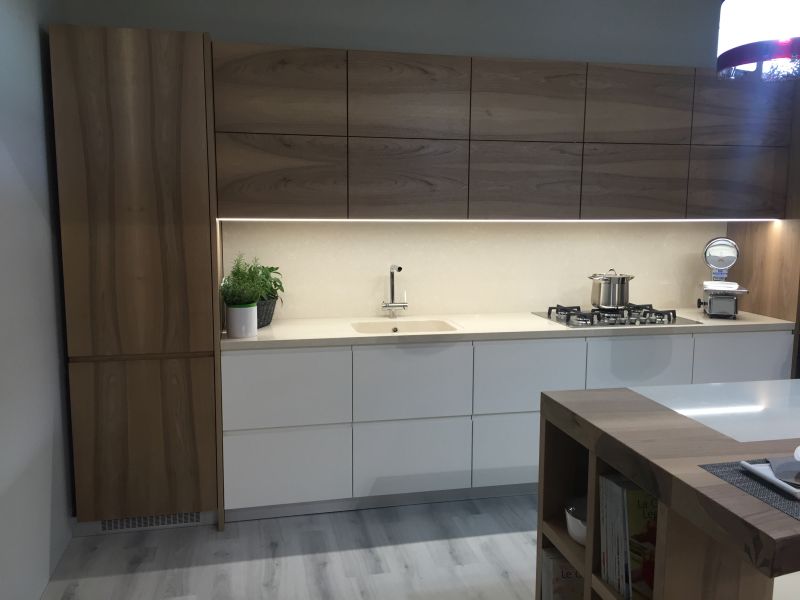
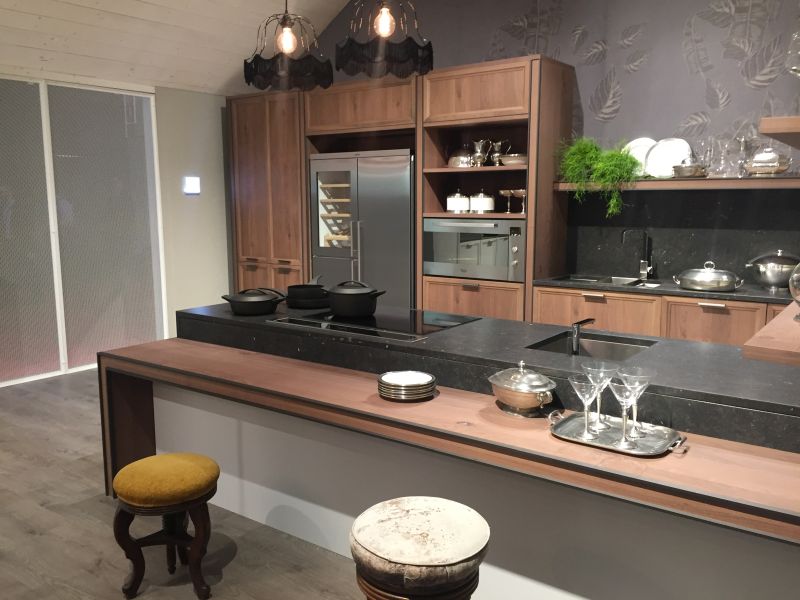
But what if several persons are using the kitchen and their heights differ quite a bit? There’s a practical solution for that situation too. Multi-height counters are a great solution for families or shared kitchens. They basically feature various surfaces with different heights so everyone can feel comfortable when using the kitchen. Another advantage for this type of design is that it’s especially great for multi-functional kitchen islands that also work as bars or dining tables.


A bar-height table work well in combination with bar stools but is not the most comfortable option for a breakfast nook or table. A counter placed at a lower height brings down the eating area to a more comfortable level and can be used in combination with regular dining chairs. Multi-height countertops also bring another idea to the table. They allow the user to physically separate functions. As a result, the dining counters can be differentiated from the prep areas, the cooktops and the baking counter and they can each be designed with the right height for the purpose they serve.


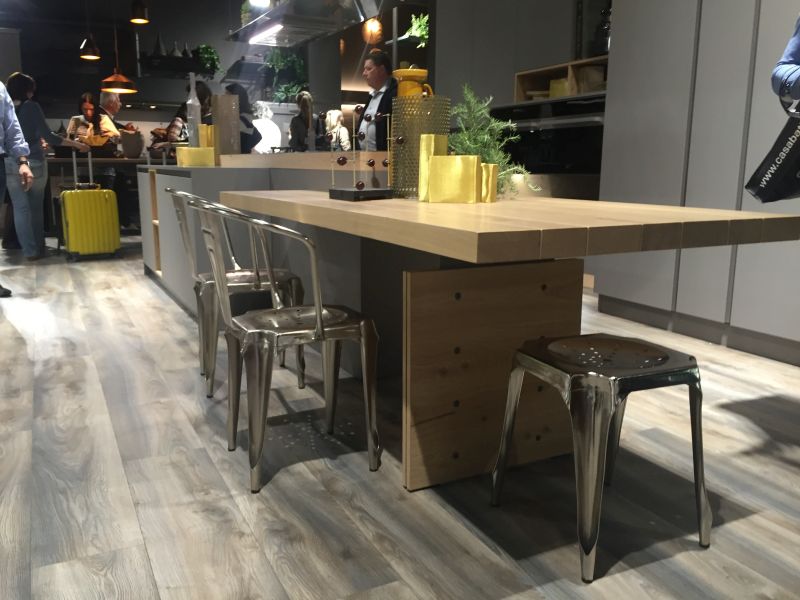

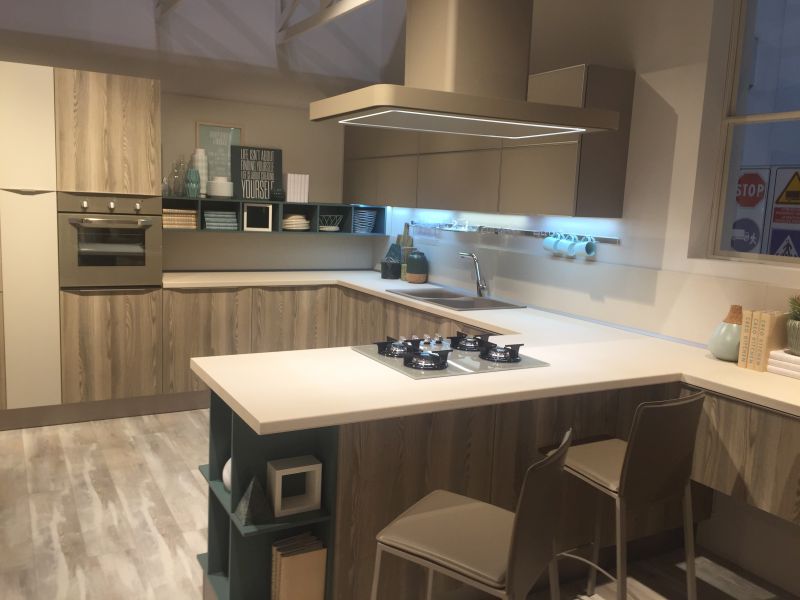
Here’s how you can figure out the right height for each area: prep surfaces need to be 3”-4” below the elbow so you can easily and comfortably chop, slice and dice. The cooking surfaces need to be 5”-6” below the elbow to avoid splashing hot oil at face level. Then there are also the low-level surfaces such as the area you use for rolling dough or kneading bread. These should be 8” below the elbow.
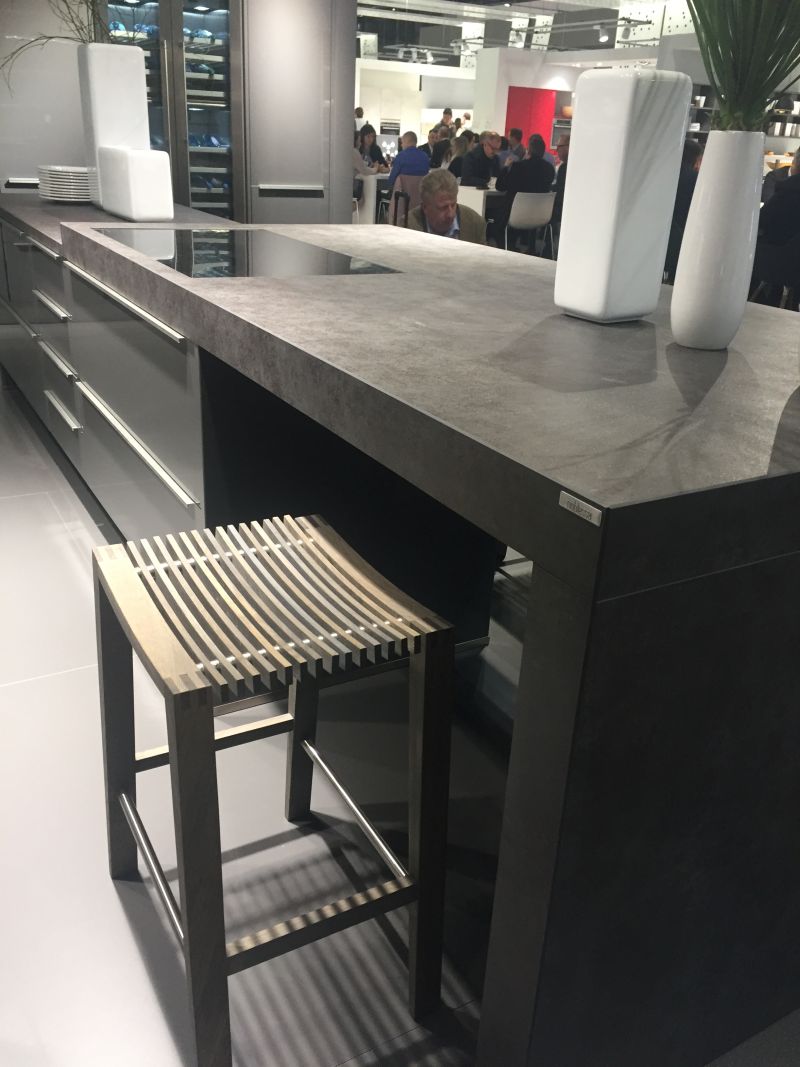




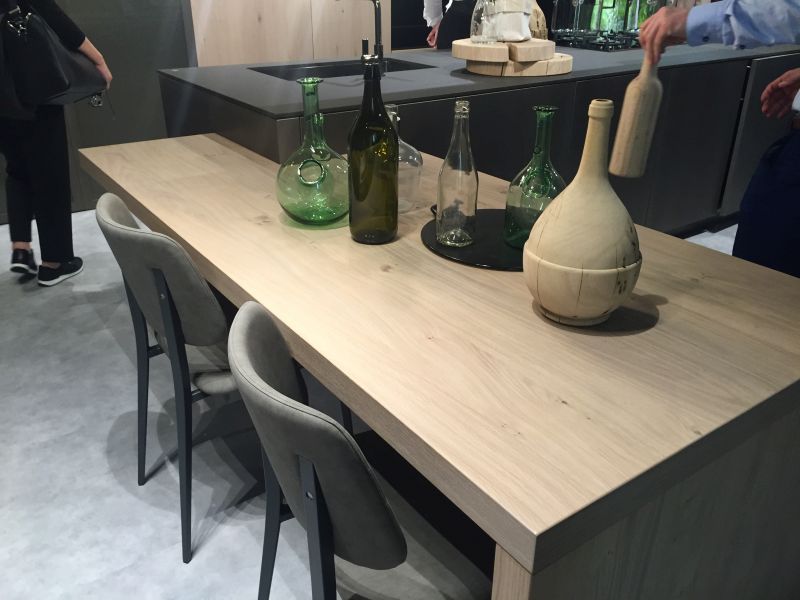


So the standard countertop height is 36” off the floor. The height, however, can sometimes vary from 35 1/2” to 37” so don’t take this number for granted. It depends on things like the thickness of the counter or the height of the cabinets. A below-average countertop height is 32′‘. One above average is 38”-39”. A wheelchair countertop is 31”-34” high and the usual kitchen island height is 42”.
What are the most popular countertop materials?
There’s a lot of different options to choose from when it comes to the material from which your kitchen countertop is made and you’ve probably heard about most of them. Each has its own unique particularities and its own pros and cons and making the right decision is always subjective. It’s best to have a good idea of all the available options going shopping and we can help you with that.
Granite
Granite was and still is the go-to countertop material for many people. It used to be more popular in the past before other more cost-efficient options were developed and today it’s more of a statement material.
Granite countertops are very strong and durable, require very little maintenance, they withstand heat very well and there’s a lot of different color variations to choose from. At the same time, they’re very expensive, difficult to install and can crack and stain if not properly sealed or under stress.
Marble
Marble is also an iconic material when it comes to countertops and it’s often associated with elegance and luxury. Because no two pieces of marble look the same, this means each countertop is unique. There’s lots of different types of marble and a lot of them are very expensive but there’s also budget options too, Carrara marble being one of them.
Marble countertops are resistant to water and heat and they’re also very beautiful. They are however expensive, they require professional installation, they stain easily and can can also be scratched easily.
Quartz
Quartz countertops are not actually made of solid slabs. They’re made of engineered stone which contains a high percentage of quartz particles and other materials which is shaped into slabs. They have a very clean and pristine look and they’re similar to marble countertops in that sense.
Quartz countertops can be custom-made in any size or shape needed, they’re resistant to stains, heat and acid, easy to maintain and easy to install. At the same time they’re very heavy and quite expensive as well.
Soapstone
Lately soapstone has become a modern alternative to granite and is a material with a dark gray color and a smooth and silky texture. It ages over time and develops a patina and it’s also a natural stone which gives it a distinctive look.
Soapstone countertops and fairly resistant to stains and heat but not as much as granite or marble. They require professional installation and need to be treated with mineral oil and they can also scratch and dent easily.
Wood
Wood is one of the most versatile materials out there and it can be used not just for the kitchen cabinetry and shelving but for the countertops as well. It has a warm look and feel and it suits a variety of different styles.
Wood countertops can be very durable and they last for a very long time. They do however require proper maintenance and must be oiled and sealed frequently. They also scratch pretty easily and they can suffer water damage and they can get stained plus bacteria can also become a problem.
Stainless steel
Stainless steel countertops give off a very professional look in the kitchen. They’re also very suited for contemporary and industrial decors and they offer many advantages. For example, stainless steel countertops are extremely durable and they’re resistant to heat and water damage and they have a natural resistance towards bacteria. However, they can be easily scratched, they’re cold and noisy and they’re also very expensive.
Concrete
Concrete has become a very popular material for a lot of contemporary home interiors. It gives off an industrial vibe and it’s very versatile overall. Concrete countertops can be fabricated to any specifications and can have custom shapes and sizes.
Concrete countertops are highly resistant to heat and scratches but they’re porous and can be damaged by water. They also stain easily, they require regular maintenance, they can crack over time and they’re difficult to install.
Laminates
Laminate countertops are extremely popular which can make them seem perhaps a bit too common and mainstream. The reason behind their popularity is a combination of factors such as their low maintenance requirements, the numerous different colors and finishes available, the low cost and easy installation.
They do of course have some disadvantages as well such as the fact that they get scratched easily, they’re difficult if not impossible to repair and they always have visible seams.
Butcher block vs granite countertops
Some of the common types of countertops can seem quite similar but also have notable differences and unique particularities. A common dilemma is whether to choose a butcher block countertop or a granite one.
First of all, let’s define each one. A butcher block is made of different cuts of wood that are assembled and joined together to create a strong and sturdy surface. They can be made of different types of wood such as maple, walnut, red oak or cherry for example.
There’s also different types of wood grains to choose from. Closed-grain wood is very smooth while open grain is more porous and textured and not as great in the kitchen.
End grain is made of numerous small square blocks joined together and is the strongest and most durable type of all.
Edge grain is the most common one because it’s both strong and affordable. It’s made from long wooden slabs.
Face grain is made of long wooden planks and is the least sturdy type.
Granite is a bit more difficult to analyze because there’s no standard way of assessing its quality and It’s up to each retailer to come up with their own grading system. We can however usually distinguish between 3 main types which are the commercial or builder grade granite, the mid-grade type and high-quality granite.
These types are all fairly similar with a few minor differences. High-quality granite is more rare and usually also has rare patterns and colors. In terms of physical quality however all three types are generally the same so the distinctions are based mostly on looks.
Both butcher block and granite countertops have pros and cons. Granite for instance is durable and low-maintenance, it’s resistant to heat, scratches and stains and it comes in many different colors and patterns. At the same time, since granite is a natural stone it can have imperfections and if it gets damaged that usually means a professional needs to be called in which can be quite expensive.
Butcher block countertops on the other hand add a warm and cozy feel to the kitchen. They’re also friendlier to your knives since they’re not as harsh as stone but that also means they get damaged more easily. They can get scratches and stains with relative ease but it’s not the end of the world because most can be fixed at home using only sandpaper and oil.
When it comes to maintenance, granite and butcher block countertops are quite different. On one hand, the wood countertops require more maintenance and need to be oiled regularly to prevent moisture from getting into the wood. This however is easy to do and doesn’t need professional assistance.
On the other hand, granite countertops are low maintenance and usually only needs to be sealed once.
Marble vs Granite countertops
Another common comparison is between marble and granite counters. It makes sense since granite is the most common type and marble is fairly similar to it in many ways. They’re both natural stone materials but marble is a metamorphic rock made of limestone while granite is an igneous rock made from a combination of elements or grains.
The most obvious difference between these two materials is their appearance. Granite has a grainy look due to its composition. These specks can be of different colors based on the composition of the granite so there’s many different variations to choose from.
Marble on the other hand is known for its smooth and unique patterns or veins. Marble is fairly uniform and the colors is typically concentrated in these veins which give each piece a unique look.
If we’re to compare these two materials based on durability, granite would be superior. It’s harder and more resistant to chips and scratches. Of course, both materials are resistant to heat but not resistant to stains since they’re both porous materials. They also both require proper maintenance and sealing.
In terms of price, marble and granite countertops are once again fairly similar. Granite tends to be a bit lower but there are of course exceptions. Rare types of granite can be more expensive than marble and vice versa.
Quartz vs granite vs marble
There’s another material that we often contemplate for our kitchen countertops: quartz. It too is quite similar to both granite and marble which can put is in a dilemma. So how does it compare to these two other materials?
Well, first of all quartz countertops are engineered surfaces and not solid natural stone slabs. This already means there’s more styles and types to choose from compared to marble and granite. Some quartz countertops have a speckled look similar to granite and others replicate the look of marble.
Quartz countertops contain a resin which is susceptible to heat damage and that means they should not be exposed to it. High levels of heat can melt the resin and leave permanent marks on the counter. In this sense, marble and granite are superior.
In terms of price, quartz is comparable to both granite and marble but tends to be a bit more expensive than these two. The higher cost however comes with a few advantages such as the fact that quartz is a non-porous material and more resistant to stains than the other two materials. It’s also durable and comes in a wide range of styles and colors.
The post Defying The Standards – Custom Countertop Height Kitchens appeared first on Home Decorating Trends - Homedit.







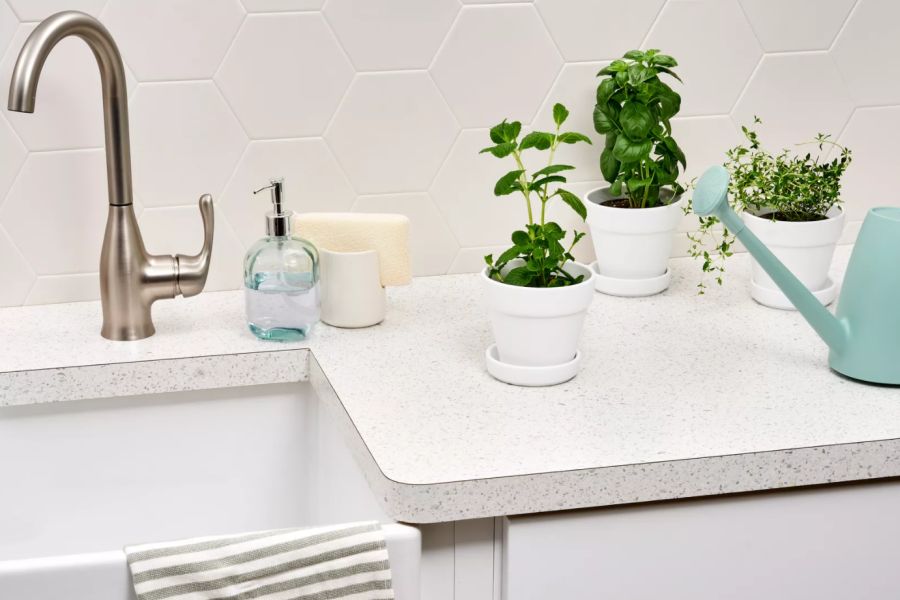



0 Commentaires